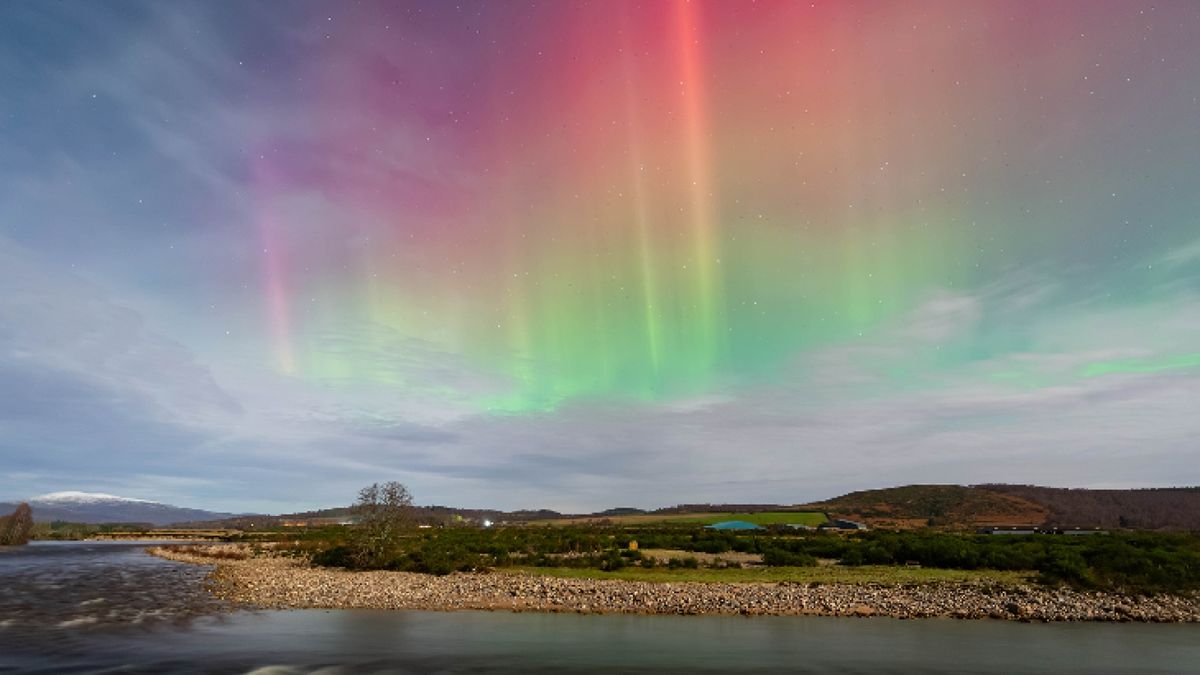
An unexpected celestial spectacle took place in the sky above Scotland recently, causing a breathtaking display of orange-colored auroras. The vibrant hues, which are rarely seen in the northern latitudes, left stargazers and astrophotographers in awe as the night sky was transformed into a canvas of fiery oranges and reds.
Scottish photographer Graeme Whipps first noticed the orange-colored skies at around 18:00 on November 25, and couldn’t give up the chance to photograph them. According to Flickr, he traveled quite far south in search of cloud breaks and ended up getting his shots above the River Dee near a village called Aboyne.
He used a Canon EOS 6D with a 15mm lens to capture the shot above, and a Sony A7S II with a Zeiss Batis 25mm f/2 to capture a few others that can be found on his Flickr. In an interview with SpaceWeather.com he described the event as an "incredible sighting" and feels lucky to catch the most active hour of the G2 aurora.
This phenomenon is an incredibly rare occurrence, caused by the interaction between charged particles from the sun and the Earth’s magnetic field and atmosphere. When the solar wind reaches Earth, its field forms a barrier (known as a magnetosphere) that compresses and distorts the solar wind.
As the charged electrons and protons from the solar wind enter Earth’s atmosphere they collide with molecules of oxygen and nitrogen, resulting in ionization. Electrons are stripped away from each atom, creating charged ions that can recombine with electrons to return to their normal state – but in doing so release energy in the form of light, and this is what causes colorful auroras.
Different gases in the atmosphere emit different colors of light. Oxygen, for example, emits red and green light, while nitrogen produces more pinks, purples and blues. In this case, we saw orange hues because vertical bands of red and green light overlapped perfectly, creating a very rare phenomenon.
While Scotland's proximity to the Northern Lights makes it one of the best places to see them, they have also been spotted elsewhere in the UK such as the Brecon Beacons (Wales), Exmoor National Park (Devon), the Lake District (Cumbria) and the Yorkshire Dales.
It might still be a pretty rare occurrence in the UK, but at least you no longer have to fork out on a trip to Iceland to view nature’s very own majestic light show – you just have to be a bit more patient.
Fancy getting into taking photos of the night sky? Check out the best cameras for astrophotography, and the best telescopes for astrophotography will also help you on your way.







